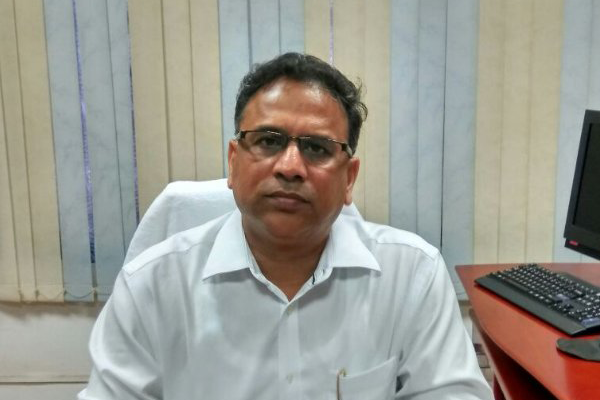
The rapid advancement of technology and an everincreasing consumption of electronic devices have led to a growing concern over the management and disposal of electronic waste, or e-waste. E-waste has become a major concern in Indian cities. Only 22.7 per cent of the e-waste in 2019-20 in India was recycled or disposed off8. Of this, over 95% is processed by the unorganised sector.
The United Nations defines e-waste as “all waste from electronic and electrical appliances that have reached their end-of-life, whether they are destined for reuse, resale, recycling, or disposal.” With rapid urbanisation and the expansion of the electronics industry, India has become the third-largest producer of e-waste globally, after China and the US, generating around 3.2 million metric tonnes of e-waste annually. Its unregulated disposal poses severe threats to public health and the environment, with toxic chemicals and heavy metals contaminating soil and water resources. This has created an urgent need to address the growing problem of e-waste in India.
The country’s rapid urbanisation has led to a higher concentration of e-waste in urban areas. E-waste becomes an issue for cities when the waste generated exceeds the capacity of the existing infrastructure to manage it effectively. Cities in India are facing the brunt of this issue, with increasing amounts of e-waste being generated every day. According to a recent report by the UN’s Global E-waste Monitor 2020, India generates around 3.2 million metric tonnes of e-waste annually, with cities like Mumbai, Delhi, Bengaluru, and Kolkata being the major contributors. However, these cities struggle with environmentally friendly e-waste management.
Factors hampering e-waste management
1. Increase in population and urbanisation
It is projected that more than 50% of India’s population will be urban by 2050 (World Urbanization Prospects, 2018)6. Census data reveals that the highest contribution to the city’s population is due to natural population increase, which accounts for 43.2% of the urban population. Most urban consumers keep themselves updated with the latest versions of electronic accessories, whether they are mobile phones, laptops, TVs, or watches. Additionally, cheap electronics have provided consumers with purchasing power, which has contributed to an increase in e-waste generation. However, the infrastructure available in cities is inadequate to manage the substantial volume of e-waste being generated.
2) Short lifespan of electronic devices
Urban economists often say that “cities are the engine of economic growth”. In the pursuit of enhanced sales growth, companies frequently introduce new models in the market. Due to this, old models become outdated in a short span of 2-3 years and are discarded. Often, companies deliberately compromise the quality of their electronic products and reduce their lifespan to increase their sales. These practices, known as planned obsolescence, contribute to the increased generation of e-waste at the consumer level who dispose of their devices directly into bins that eventually end up in landfills. Such practices undermine the efficiency of e-waste management systems.
3) Improper disposal practices
Consumers and industries prefer to dispose of their e-waste by handing it over to the local Kabadiwalla, rather than reaching out to authorised disposable centres. The unorganised sector which employs unskilled labour manages a significant portion of the e-waste. This results in their improper separation, sorting, storage, collection, transportation, and disposal without following the guidelines or regulations mentioned in Management Rules 2016.
This leads to the disposal of e-waste in landfills, illegal trading, and substandard treatment. Data reveals that only 32.9% of e-waste is recycled, while the remaining 67% remain unprocessed and directly sent to landfills9. Indian cities struggle to create adequate infrastructure due to the lack of an updated inventory, leading to poor recycling. This becomes a vicious cycle where poor disposal practices lead to inadequate infrastructure, which in turn leads to poor recycling practices.
4) No incentive for producers to comply with Extended Producer Responsibility (EPR)
The E-Waste (Management) Rules, 2016, regulate e-waste management in India. The principle of Extended Producer Responsibility (EPR) assigns the responsibility to producers to dispose of specific electrical and electronic equipment (EEE) in a scientific and environmentally safe manner, as well as meet the annual targets for EEE collection and recycling. However, the enforcement of these rules has been slow, and compliance remains low.
Additionally, the lack of incentives for consumers to dispose of e-waste at collection centres has made this process difficult. It is challenging for large businesses to manage these centres cost-effectively and efficiently due to India’s vast size. According to Priti Mahesh, a senior programme coordinator at Toxics Link Producer Responsibility Organisations (PROs), it would not be economically feasible or sustainable for brands to individually reach all corners of the country.
E-waste – A threat to Indian cities
Poor e-waste management can contaminate basic natural resources like soil, water, and air. Dumping hazardous substances into rivers and water bodies is a common practice, making the water unsafe for human consumption and causing health problems such as nausea and diarrhoea. Furthermore, improper disposal of e-waste, such as burning or dumping it in landfills, can release harmful substances into the environment, leading to pollution and posing health risks to humans including respiratory problems, skin irritation, neurological damage, and even cancer. Generally, e-waste is handled by ill equipped and unskilled workers without adhering to necessary safety gears and measures. E-waste contains hazardous materials such as polychlorinated biphenyls (PCBs), which are present in capacitors and transformers. When they are shredded or broken down, workers can come in direct contact with these harmful chemicals which can damage the immune and reproductive systems and can even cause cancer.
Another common practice is burning the plastic coating of cables, circuits, and coils to extract valuable metals such as copper. This process often releases pollutants like polyvinyl chloride (PVC), which is harmful if inhaled. PVC exposure can affect the nervous system and damage the lungs. Ingestion of copper can damage the liver and kidneys and cause chronic respiratory diseases.
Batteries, monitors, and lamps contain other harmful metals such as lead, cadmium, and mercury. Exposure to these metals can cause various health problems like muscle pain, headaches, loss of appetite, vomiting, and diarrhoea.
A way forward: Environmentally responsible behaviour
Responsible e-waste management practices are essential to mitigate their adverse effects on the environment and public health.
Role of Bazar
Producers face high costs and other challenges when setting up e-waste management infrastructure. To facilitate it, collective Producer Responsibility Organizations( PROs) should be promoted by creating awareness at the producer level.
Another incentive could be imposing a small recycling tax on the selling price of electronic gadgets. This can motivate producers to engage actively. Proper e-waste management can reduce the costs associated with fines, legal fees, and remediation efforts in case of environmental damage caused by improper disposal. Additionally, the recovery of valuable materials from e-waste can provide a source of income for the producer. These incentives can drive producers towards environmentally sustainable e-waste management practices.
Role of Samaaj
In 1985, social psychologist, Icek Ajzen, in his article titled “From Intentions to Actions: A Theory of Planned Behavior”1 proposed a theory that a person’s behaviour is influenced by three factors: attitude, perceived behavioural control, and subjective norms. The same theory can be applied to e-waste management, where individual intentions play a critical role in their behaviour towards proper e-waste disposal. In Indian cities, incentivizing consumers is crucial to encourage them to support environmentally responsible e-waste management. An effective incentive to encourage consumers could be giving them vouchers that can be redeemed on their next purchase or even offering monetary rewards when they bring their e-waste to designated collection centres. By placing a value on waste, consumers may be inclined towards efficient and better quality recycling.
Raising awareness about the harmful effects of poor e-waste management on people and the environment is another critical step. This can be done through awareness programmes that highlight their hazardous consequences and offer solutions for reducing it. By focusing on these incentives and awareness programmes consumers could be encouraged to take an active role in responsible e-waste management.
Role of Sarkar
The E-waste Management Rules of 2016 states that manufacturers are responsible for establishing systems for the proper disposal and regeneration of their products. Producer Responsibility Organizations (PROs) have been created to facilitate this.But, there is a need to encourage the collection of e-waste and bring it to the PROs. Urban local bodies such as municipal corporations can play a vital role in this process by actively collecting e-waste and providing it to the PROs for environmentally friendly recycling.
Also Read | Circularity of Urban Transport How Cities Need Investments to Harness Their Waste Better
However, a formal e-waste management system might impact the livelihoods of informal workers. One solution could be to integrate these workers into the formal system. Additionally, a strict regulatory framework and enforcement mechanisms must be put in place to ensure that producers comply with the rules and violators are penalised.
In conclusion, e-waste has become a major concern in Indian cities due to the country’s rapid urbanisation and the short lifespan of electronic devices.. Despite the implementation of the E-Waste (Management) Rules, 2016, compliance remains low, and there is no incentive for producers to comply with the Extended Producer Responsibility (EPR) principle. Lack of adequate infrastructure, unregulated disposal, and the absence of an updated inventory have made it challenging to manage e-waste effectively. Therefore, addressing the growing problem of e-waste has become an urgent need in India, requiring proper management, regulation, and making this ecosystem motivating for both producers and customers. It is essential to raise awareness and implement effective solutions to minimise the adverse effects of e-waste on public health and the environment, making it a sustainable and safe practice
Views expressed by: Shalu Sapnani, Scholar, Indian School of Public Policy





















